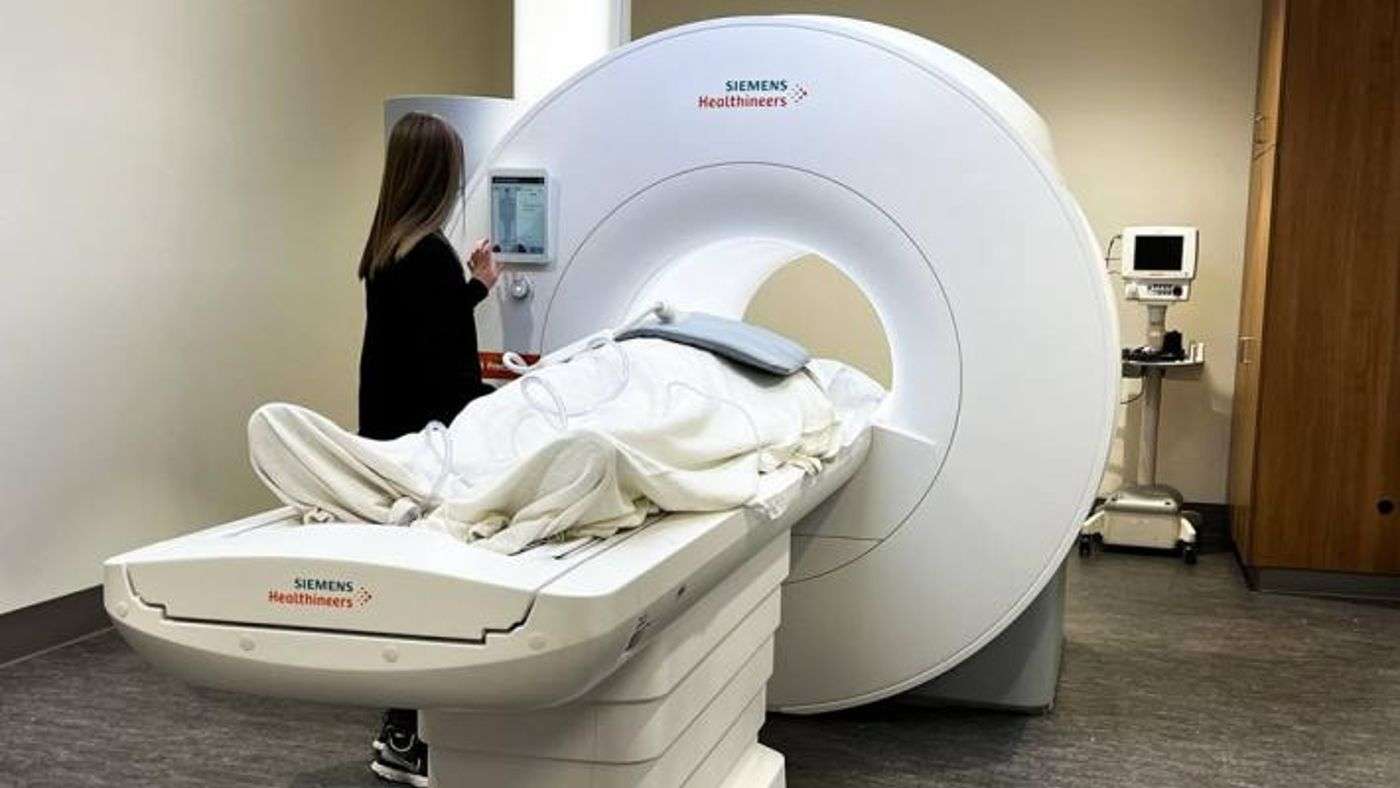How You Think About Your Pain Can Make it Worse - But New Reprocessing Treatment Offers Cure
How you think about your pain can make it worse, or better, depending on what you're thinking - the breakthrough of a new cure.

Ohio State University's colleges of medicine and engineering have partnered with Siemens to create a new MRI machine that overcomes key limitations of the existing machine.
Their new new design opens up the use of the MRI to those with implants, with obesity, and other circumstances that prohibit the machine's use.
Critical for achieving accurate diagnoses, a Magnetic Resonance Imager (MRI) has several critical limitations. For those with implants like pacemakers, the MRI cannot be used. Existing machines can't see inside human lungs, they expose patients—especially repeat patients with chronic conditions—to significant amounts of radiation. They're expensive to install and run, and for those in the highest echelons of the body-mass index, they can't fit into the opening.
The 0.55T MAGENTOM Free.Max solves all five of these drawbacks, thanks to the work of Orlando Simonetti, a research director of cardiovascular magnetic resonance at OSU, and Rizwan Ahmad, assistant professor of biomedical engineering.
The secret behind the design is a lower resonance level. MRIs typically have magnetic field strengths of 1.5 or 3.0 Tesla; the Free.Max is much lower at 0.55 Tesla.
Imaging lungs is typically done with or in conjunction with nuclear imaging or X-ray CT scans, dosing the patient in radiation.
"The air in the lungs cancels out the MRI signal at higher field strength; however, at lower field, there's potential to see lung tissue more clearly with the MRI," Simonetti told his university press. "We were looking for ways to improve the quality of images in these patients, and lower magnetic field strength could offer an advantage."
This will be key for patients with cystic fibrosis pulmonary hypertension, heart failure, and even COVID-19.
Having a strength of 1.5 or 3.0, like the currently available MRI machines, means they are expensive to build, buy, install, and operate.
This often excludes the possibility of having an MRI machine in most outpatient facilities, and some hospitals—especially in lower income or rural areas. A 2018 study found that only 1% of rural Canadian hospitals even had an MRI machine.
Their new new design opens up the use of the MRI to those with implants, with obesity, and other circumstances that prohibit the machine's use.
Critical for achieving accurate diagnoses, a Magnetic Resonance Imager (MRI) has several critical limitations. For those with implants like pacemakers, the MRI cannot be used. Existing machines can't see inside human lungs, they expose patients—especially repeat patients with chronic conditions—to significant amounts of radiation. They're expensive to install and run, and for those in the highest echelons of the body-mass index, they can't fit into the opening.
The 0.55T MAGENTOM Free.Max solves all five of these drawbacks, thanks to the work of Orlando Simonetti, a research director of cardiovascular magnetic resonance at OSU, and Rizwan Ahmad, assistant professor of biomedical engineering.
The secret behind the design is a lower resonance level. MRIs typically have magnetic field strengths of 1.5 or 3.0 Tesla; the Free.Max is much lower at 0.55 Tesla.
Imaging lungs is typically done with or in conjunction with nuclear imaging or X-ray CT scans, dosing the patient in radiation.
"The air in the lungs cancels out the MRI signal at higher field strength; however, at lower field, there's potential to see lung tissue more clearly with the MRI," Simonetti told his university press. "We were looking for ways to improve the quality of images in these patients, and lower magnetic field strength could offer an advantage."
This will be key for patients with cystic fibrosis pulmonary hypertension, heart failure, and even COVID-19.
Having a strength of 1.5 or 3.0, like the currently available MRI machines, means they are expensive to build, buy, install, and operate.
This often excludes the possibility of having an MRI machine in most outpatient facilities, and some hospitals—especially in lower income or rural areas. A 2018 study found that only 1% of rural Canadian hospitals even had an MRI machine.
A medical imaging company quotes a price of a modern high-powered MRI at anywhere from $150,000 to $1 million, with a daily operating energy expenditure of 10x the normal American household's energy consumption.
"Many of our patients have pacemakers or defibrillators and while many of those devices are now safe for MR scanning, the metal in them can distort the magnetic field and corrupt the image quality," said Simonetti.
"There's no doubt in my mind that low-field MRI will play an important role in the future and will become more mainstream."
Children with congenital heart disease often undergo MRI-guided, X-ray heart catheterizations several times in their lives, and the lower field strength of the Free.Max means that these children, like patients with lung disease, aren't overdosed with harmful radiation from too many X-rays.
Beyond these four big improvements, the Free.Max also has the largest opening (31 inches) of any MRI machine, expanding its use to more obese patients—and easing the burden for claustrophobic folks. A win-win-win-win for all.
(WATCH the video for this story below.)
SHARE This Breakthrough in Innovation With Friends…
Be the first to comment